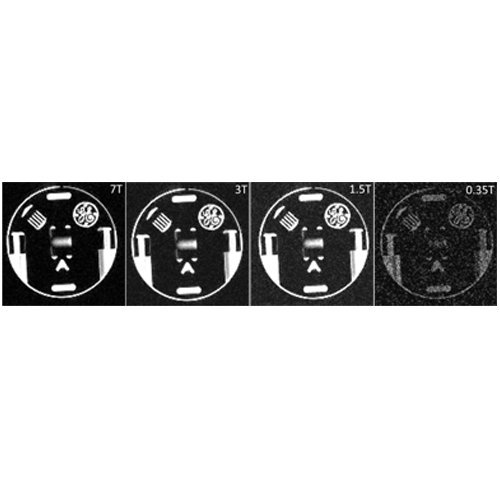Application
Minimum field strength simulator for proton density weighted MRI
Contributors
Weiyi Chen1, Ziyue Wu2, Krishna Nayak1
Contact
weiyic@usc.edu
Objective: To develop and evaluate a framework for simulating low-field proton-density weighted MRI acquisitions based on high-field acquisitions, which could be used to predict the minimum B0 field strength requirements for MRI techniques. This framework would be particularly useful in the evaluation of de-noising and constrained reconstruction techniques.
Materials and Methods: Given MRI raw data, lower field MRI acquisitions can be simulated based on the signal and noise scaling with field strength. Certain assumptions are imposed for the simulation and their validity is discussed. A validation experiment was performed using a standard resolution phantom imaged at 0.35 T, 1.5 T, 3 T, and 7 T. This framework was then applied to two sample proton-density weighted MRI applications that demonstrated estimation of minimum field strength requirements: real-time upper airway imaging and liver proton-density fat fraction measurement.
Results: The phantom experiment showed good agreement between simulated and measured images. The SNR difference between simulated and measured was ≤ 8% for the 1.5T, 3T, and 7T cases which utilized scanners with the same geometry and from the same vendor. The measured SNR at 0.35T was 1.8- to 2.5-fold less than predicted likely due to unaccounted differences in the RF receive chain. The predicted minimum field strength requirements for the two sample applications were 0.2 T and 0.3 T, respectively.
Conclusions: Under certain assumptions, low-field MRI acquisitions can be simulated from high-field MRI data. This enables prediction of the minimum field strength requirements for a broad range of MRI techniques.
Publications
Affiliations
1University of Southern California, California, USA
2Alltech Medical Systems America, Ohio, USA


